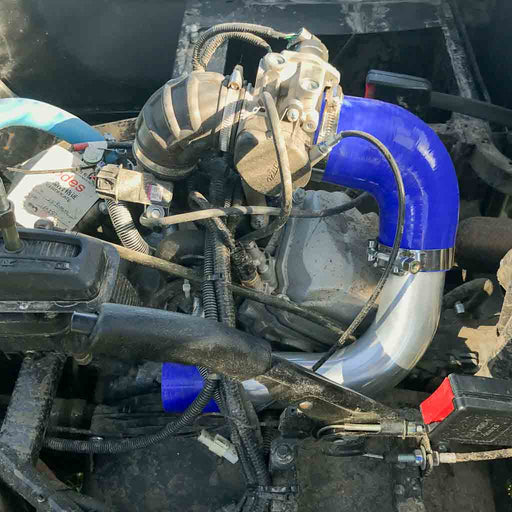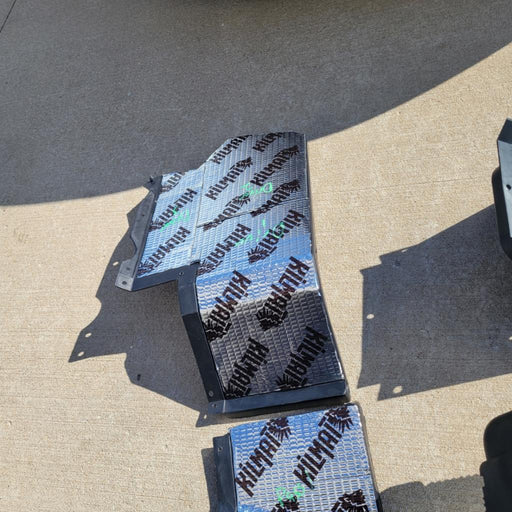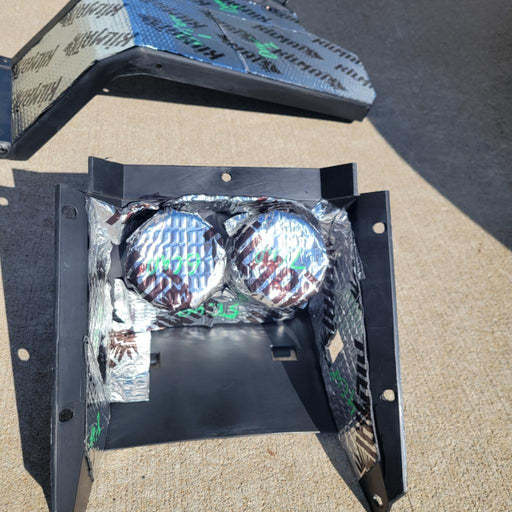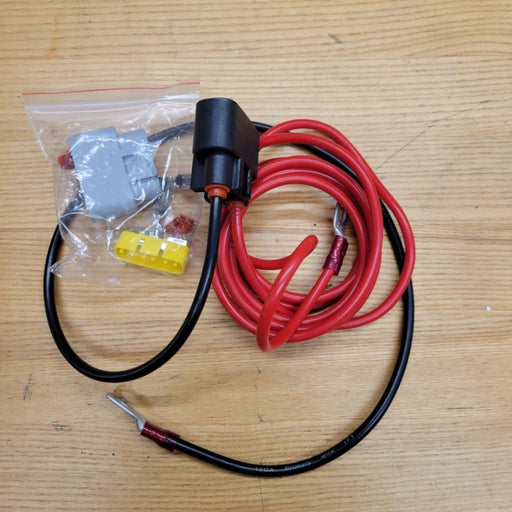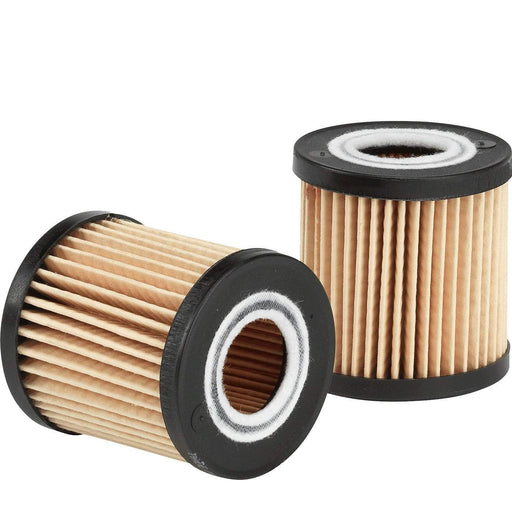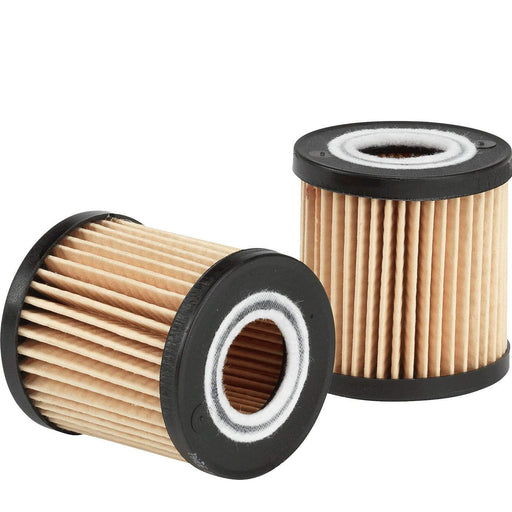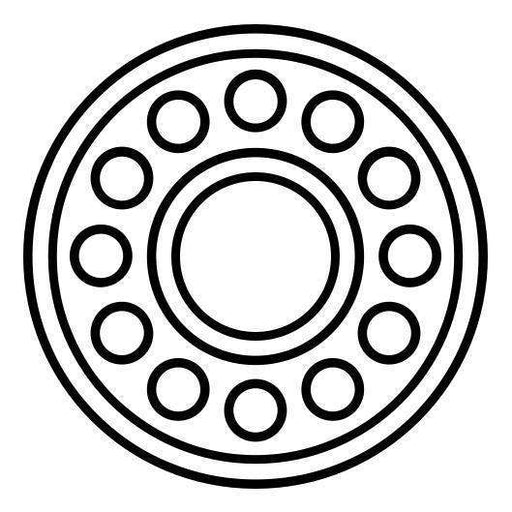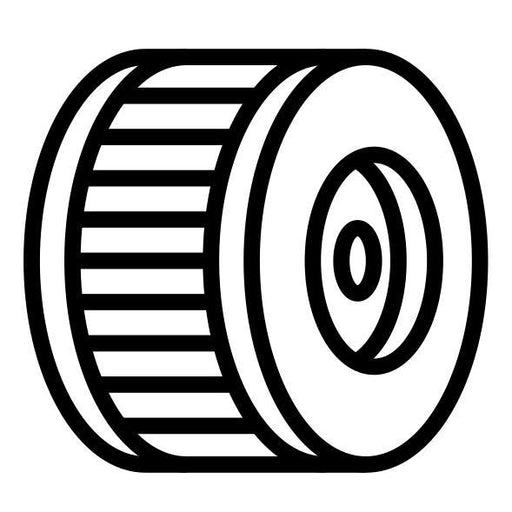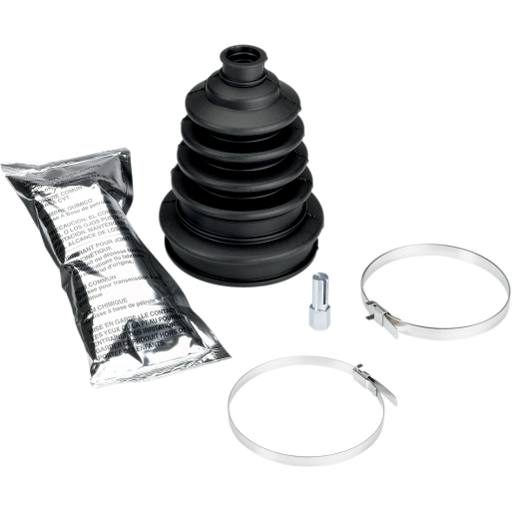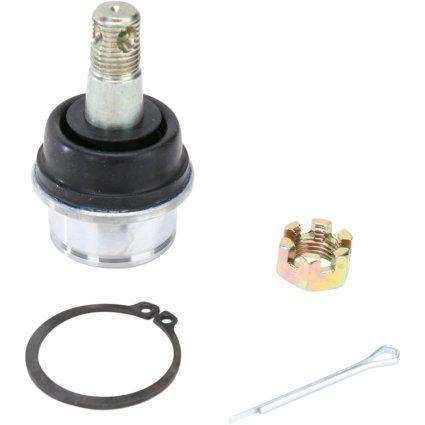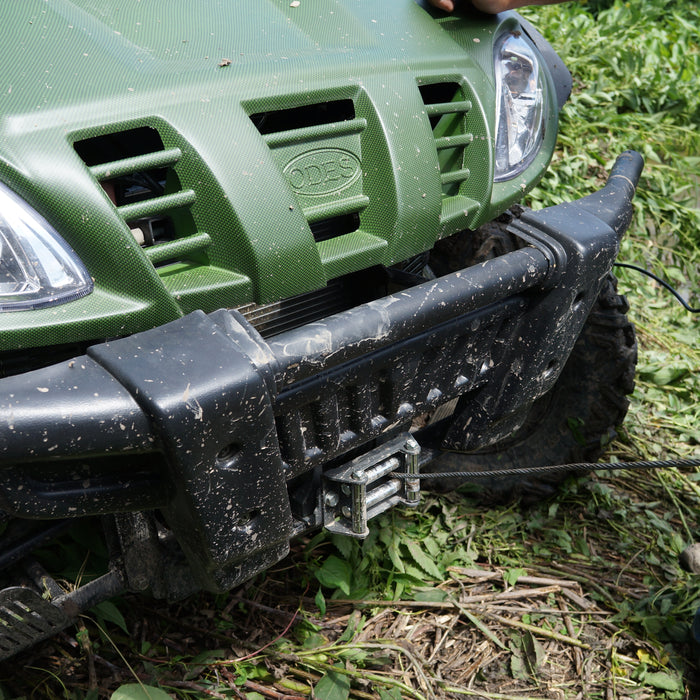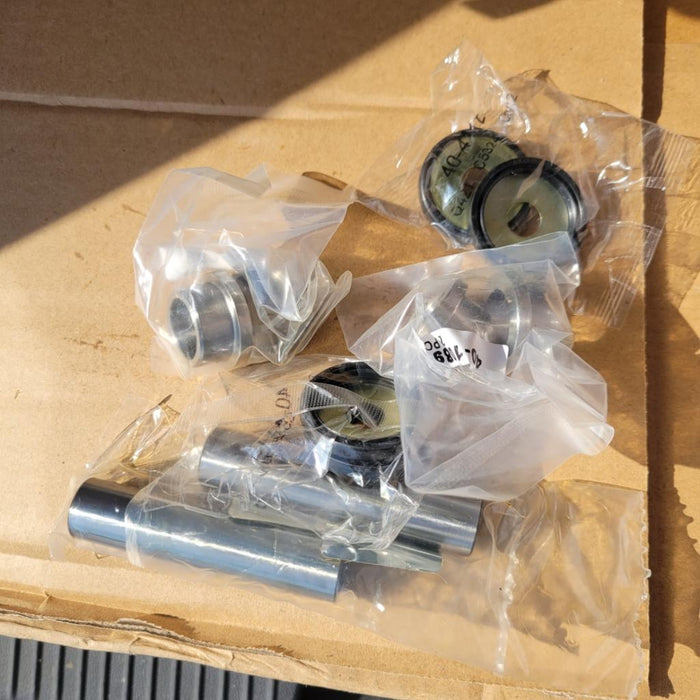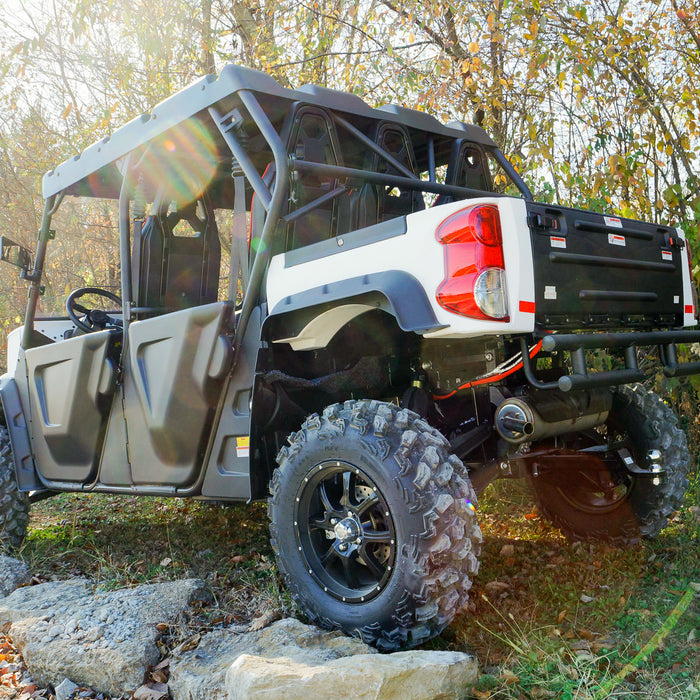
A Pocket Size Jump Start



When the Micro-Start arrived in the mail. We were not disappointed. Everything that we used to drag around with us (and so many more cool accessories) fits into the included leather case. The case wasn't anything special, but it's definitely nice to have a place to corral all the accessories. It reminds us a lot of the old CD cases we had in our cars back in high school.

Amazingly, on my first draft of this post, I neglected to mention the jumper cables. There are so many awesome features that I completely spaced the most obvious (and important) feature. The Micro-Start comes with a set of small detachable jumper cables which plug into a covered port at the end of the jump started. The small cables are much appreciated as not only do they make the whole system that much more portable, but they replace a really heavy set of cables.
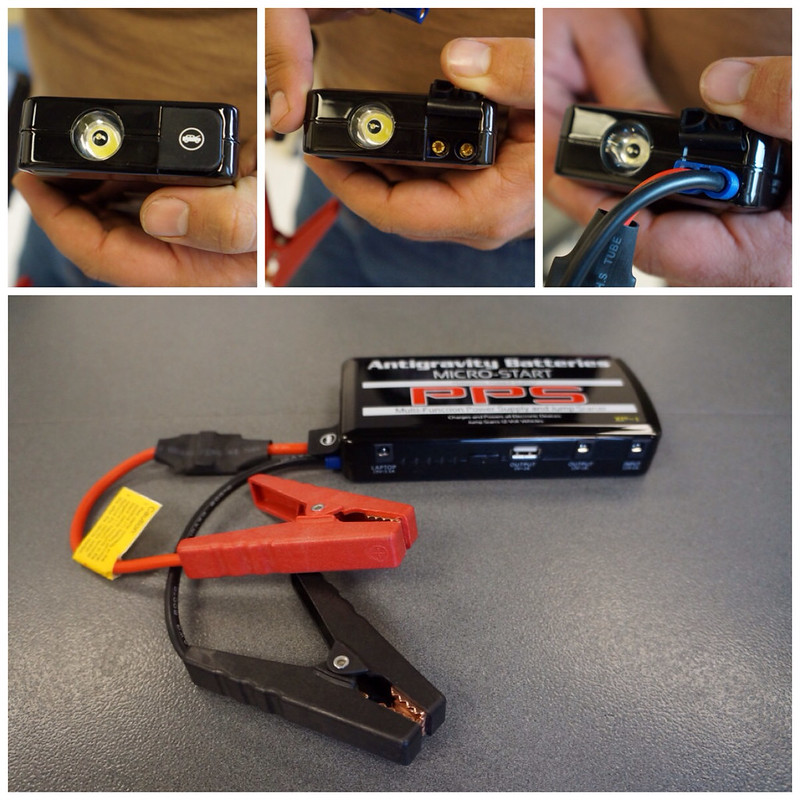

Along the side of the Micro-Start is the laptop port (this is not included in the XP-3 version), five battery level indicators, the power button, a USB charging port, a 12V outlet (also not included in the XP-3), and the 12V input port for charging the Micro-Start. We expected the Micro-Start to come with a wall charger, but we were surprised that it came with a car charger too. That was a huge bonus and a big plus for us, since the ability to charge our other mobile devices was what sold us.

We are on the road a lot and with our blog, our business, and other work related activities, that means that are electronics are on the road a lot as well. In the last few years, I have often considered buying a battery back up for my cell phone but I’ve honestly just never gotten around to it. After we got the Micro-Start, we took a trip to Best Buy and took a look at some of the battery back ups I WOULD have bought, had the Micro-Start not had the USB port - they were in the ball park of $60-$100! Granted, we paid $159.99 for the XP-1 because we wanted to be able to charge our laptops, but even if we had spent a $130 on the XP-3, not only could we charge our phones (for a REALLY long time) but we'd still have the ability to jump start our cars, truck, and ATVs. From a financial standpoint, the Micro-Start is a little more expensive. But for us it was a no brainer.
We always have so much stuff with us and being able to use the Micro-Start for jump starts and as a battery back up for our phones is really nice. We tried it on both Scott's Android and my iPhone 5 and it worked great. We were even able to use the flash light while our phones charged. That gave us quite a bit of peace of mind and we will definitely be ordering a second Micro-Start for our car.
 Some of the included adaptors for mobile devices were the old iPhone/iPod 30-pin charger and a micro and mini USB, which you can see plugged into Scott's Android phone in the photo above. Unfortunately, the Micro-Start did not include an adapter for the lightning cable used on newer Apple devices, but I was able to charge my iPhone 5 using my own lightning cable plugged into the USB port.
Some of the included adaptors for mobile devices were the old iPhone/iPod 30-pin charger and a micro and mini USB, which you can see plugged into Scott's Android phone in the photo above. Unfortunately, the Micro-Start did not include an adapter for the lightning cable used on newer Apple devices, but I was able to charge my iPhone 5 using my own lightning cable plugged into the USB port.

The Micro-Start also included adapters for a variety of laptop chargers. Scott's HP fits, and we're planning a little experiment in the next few weeks to update everyone on just how well the Micro-Start works with the laptop. Unfortunately, there is not currently an adapter available for the MagSafe connector used by Apple. So while we can use the Micro-Start to power Scott's HP laptop and HP Chromebook, I'm out of luck if I want to charge my Macbook Pro. I'm still looking for a way to make this work, but if the sole reason for buying a Micro-Start is to charge a Macbook, I wouldn't hold your breath. Everyone else should be fine though.

-
Original price $ 159.99 - Original price $ 204.99Original price$ 159.99 - $ 204.99$ 159.99 - $ 204.99Current price $ 159.99
Air Filter Relocation Kit for ODES UTVS
Scooter's PowersportsOut of stockOur very own Air Filter Relocation kit for ODES UTVS. Designed and manufactured by Scooter's Powersports. Unlike some ODES Air Filter Relocation K...
View full detailsOriginal price $ 159.99 - Original price $ 204.99Original price$ 159.99 - $ 204.99$ 159.99 - $ 204.99Current price $ 159.99Sold out -
Original price $ 129.99 - Original price $ 159.99Original price$ 129.99 - $ 159.99$ 129.99 - $ 159.99Current price $ 129.99
Pre-Cut Sound Proof Matting for ODES UTVS
Scooter's PowersportsIf the noise inside the cab of your ODES UTV has ever bothered you, this. is your solution. Now you can get one of our best selling shop services a...
View full detailsOriginal price $ 129.99 - Original price $ 159.99Original price$ 129.99 - $ 159.99$ 129.99 - $ 159.99Current price $ 129.99 -
Original price $ 40.00 - Original price $ 40.00Original price$ 40.00$ 40.00 - $ 40.00Current price $ 40.00
Voltage Regulator Relocation Kit for ODES UTVS
Scooter's PowersportsDesigned to move the voltage regulator from under the hood to under the seat. Requested by you and built by Scooter's Powersports. Allows for elimi...
View full detailsOriginal price $ 40.00 - Original price $ 40.00Original price$ 40.00$ 40.00 - $ 40.00Current price $ 40.00 -
 View all ODES UTV Performance mods
View all ODES UTV Performance mods
-
 ODES UTVS best sellers
ODES UTVS best sellers -
Original price $ 38.49 - Original price $ 55.99Original price$ 38.49 - $ 55.99$ 38.49 - $ 55.99Current price $ 38.49
ODES Oil Change Kit for 800 and 1000 Engines
Scooter's PowersportsODES Industries recommends an engine oil change at 25-hours of run time or 1000 miles. (We won’t tell if you turn that down to once every 50-hours ...
View full detailsOriginal price $ 38.49 - Original price $ 55.99Original price$ 38.49 - $ 55.99$ 38.49 - $ 55.99Current price $ 38.49 -
Original price $ 7.99 - Original price $ 7.99Original price$ 7.99$ 7.99 - $ 7.99Current price $ 7.99
ODES Oil Filter - High-Performance
Not specifiedHigh-performance aftermarket ODES oil filter. Compatible with 800cc and 1000cc ODES engines. Be sure to select your make and model before adding to...
View full detailsOriginal price $ 7.99 - Original price $ 7.99Original price$ 7.99$ 7.99 - $ 7.99Current price $ 7.99 -
Original price $ 49.99 - Original price $ 62.00Original price$ 49.99 - $ 62.00$ 49.99 - $ 62.00Current price $ 49.99
Pivot Works Wheel Bearing Kit for ODES - Lifetime Replacement!
Pivot WorksPivot Works wheel bearing kit for 2012+ 800cc and 1000cc UTVs from ODES Industries. Fitment includes the Short Travel (Standard) suspension and the...
View full detailsOriginal price $ 49.99 - Original price $ 62.00Original price$ 49.99 - $ 62.00$ 49.99 - $ 62.00Current price $ 49.99 -
Original price $ 159.99 - Original price $ 204.99Original price$ 159.99 - $ 204.99$ 159.99 - $ 204.99Current price $ 159.99
Air Filter Relocation Kit for ODES UTVS
Scooter's PowersportsOut of stockOur very own Air Filter Relocation kit for ODES UTVS. Designed and manufactured by Scooter's Powersports. Unlike some ODES Air Filter Relocation K...
View full detailsOriginal price $ 159.99 - Original price $ 204.99Original price$ 159.99 - $ 204.99$ 159.99 - $ 204.99Current price $ 159.99Sold out -
Original price $ 40.99Original price $ 40.99 - Original price $ 40.99Original price $ 40.99Current price $ 36.95$ 36.95 - $ 36.95Current price $ 36.95
ODES 800cc Air Filter | 21040401001
ODES IndustriesOut of stockOEM air filter for ODES 800cc engines. Vehicle Fitment This part is compatible with the following vehicles 2012+ ODES Dominator 800 2015+ ODES Dom...
View full detailsOriginal price $ 40.99Original price $ 40.99 - Original price $ 40.99Original price $ 40.99Current price $ 36.95$ 36.95 - $ 36.95Current price $ 36.95Sold out -
Original price $ 18.99 - Original price $ 18.99Original price$ 18.99$ 18.99 - $ 18.99Current price $ 18.99
Fast Boot Kit
MooseOut of stockExtremely heavy duty CV boot that fits virtually all ATVs and UTVs. Additional rib to allow boot to expand for larger joints Improved clamp retain...
View full detailsOriginal price $ 18.99 - Original price $ 18.99Original price$ 18.99$ 18.99 - $ 18.99Current price $ 18.99Sold out -
Original price $ 29.99 - Original price $ 29.99Original price$ 29.99$ 29.99 - $ 29.99Current price $ 29.99
ODES Ball Joint Kit
Scooter's PowersportsODES ball joint kit for 800cc and 1000cc ODES UTVs. ODES Ball Joint Kit Includes (1) Ball joint (1) Circlip (1) Cotter pin (1) Nut Each kit provi...
View full detailsOriginal price $ 29.99 - Original price $ 29.99Original price$ 29.99$ 29.99 - $ 29.99Current price $ 29.99


